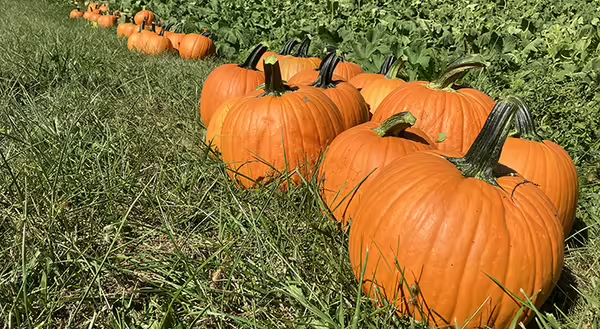
As we get into the later part of July, now is the time to start scouting more closely for diseases and insects in pumpkins. Powdery mildew is by far the most prevalent and common pumpkin disease, but also bacterial spot. Some years, downy mildew can also blow into the area; however, I have not heard of any reports of downy mildew in any cucurbits in the region. Cucumber beetles and squash bugs are the most prevalent insect issues, along with aphids occasionally.
Disease
To catch powdery mildew early, we want to be scouting the vines and also undersides of leaves which is where it often shows up first. For best control, start a preventative fungicide program, before or as soon as any infection is noted in the field: often late July or early August is when we would expect to see infections start.
Plant pathologist Dr. Mohammad Babadoost's 2023 Pumpkins Spray Recommendations provides current research and recommendations for common pumpkin diseases. For more information or questions about pumpkin disease management, contact Dr. Babadoost at 217-333-1523 or babadoos@illinois.edu.
Insects
For specific insect recommendations, refer to the Midwest Vegetable Production Guide for products and thresholds or contact our specialty crops entomologist, Dr. Kacie Athey (217-244-9916; kathey@illinois.edu ). We can tolerate some insect presence and still not have enough damage to warrant spraying an insecticide. ALWAYS scouts for insects versus just throwing in the insecticide with every fungicide spray. Often you do not need an insecticide that frequently, so you are wasting money on the product. Additionally, if you over spray, you can often eliminate natural predators of aphids and then end up with aphid issues. This means you must add yet another product ($$) to manage them in addition to the extra insecticide you applied which got you to this point in the first place. Usually on my own farm, I can get away easily with using an insecticide every other fungicide spray and sometimes less than that.
When applying insecticides in pumpkins, always spray in the late afternoon, evening, or after dark to help preserve our pollinators. Most pumpkins flowers are closed by this time and bee activity decreases. Early in the morning is probably the worst time. That day’s flowers are opened, and bees are very active with the first light of the day, even before sunrise.
Author: Nathan Johanning is a commercial ag educator based in southeastern Illinois.